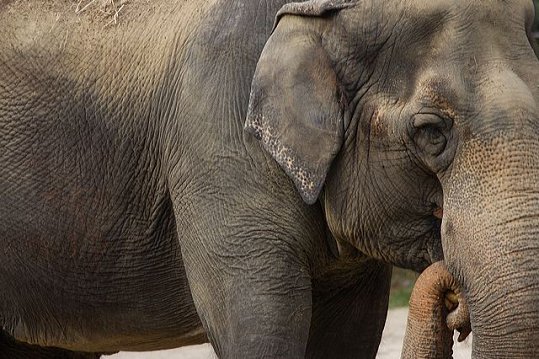
by John Aitken
A zoonosis is defined as an infectious disease transferred between humans and animals. Salmonella and campylobacter spring to mind. They are the tip of the iceberg. Influenza, the 20th century serial killer, and HIV are more compelling examples of zoonoses. HIV and influenza crossed over the border with catastrophic consequences for humanity.
It is also important to remember that the border is open both ways. In 2005, a baby elephant was prematurely born at the San Diego Safari Park. The animal required close nursing. Keepers slept next to it, and blew down its trunk (a soothing gesture). Some days after birth, the elephant developed large pus-filled lesions, and despite treatment, died. The keepers then developed similar lesions. The agent was MRSA CA300, a community strain of MRSA. CA300 had been transferred to the elephant from humans, and then back to the keepers.
A recent study at Canterbury Health Laboratories, using new techniques in DNA sequencing, found that the predominant agent (60%) in diarrhoeal disease in the community was Astrovirus. Astrovirus is a zoonosis, is common an animal and avian species, and is not routinely tested for in New Zealand laboratories.
Parvovirus, well known among dog owners, has also made crossed the border. Parvovirus B19 is found in HIV infected patients and has also causes significant disease in HIV negative individuals. Parvovirus PARV4 is similarly implicated in human disease.
Part of the reason for the discovery of these new infectious agents is the use of DNA sequencing in healthy and sick individuals. The Microbiome Project (http://commonfund.nih.gov/hmp/) is a good example of this type of search. Examination of the blood using sequencing of DNA is like deep sea trawling. Forty years ago, when I started in the medical laboratory, blood was considered to be sterile. Nowadays, we are learning by application of DNA deep sequencing that blood is a refuge for many bacteria and viruses, some transient, and some chronic disease causing agents.
Although we are able to determine colonisation of the blood, we cannot yet determine the causative role in disease of most of these new agents. Studies of clinical sub-populations (multiple sclerosis, chronic fatigue syndrome) are under way, and these may shed light on the aetiology of “auto-immune diseases” as we now call them. This is an exciting time for medical scientists and molecular biologists, but where is this all going?
In New Zealand, not very far at all. The technology is unavailable to most researchers and there is no funding to provide speculative research opportunities. The work I am currently involved with is carried out with overseas collaborators.
The elephant in the room, is of course, Johne’s Disease, and the suspected link to Crohn’s disease in humans. The technology to answer this question is now available. Like the blind men and the elephant, opinions differ as to the nature of the beast. To some researchers it is an autoimmune disease, to others it is a zoonosis. Mycobacterium avium subspecies paratuberculosis (MAP) is the prime zoonotic suspect.
My area of the elephant looks like this. MAP, in some form, may play a part in Crohn’s disease. The behaviour of Crohn’s disease strongly suggests a Global epidemic. Rates are rocketing. If it were solely due to a human genetic mutation, the graph plotting the increasing rates of Crohn’s disease would be slow and steady. Researchers internationally are able to grow MAP from blood and tissue of Crohn’s patients, and DNA sequencing will enhance this somewhat haphazard endeavour. In Australia, patients with Crohn’s disease are being successfully treated with MAP-specific antibiotics.
So, if my view of the back of the elephant is correct, there needs to be increasing communication and collaboration (both national and international) amongst those parties with an interest in MAP, including medical and veterinary researchers, industry groups, farmers and vets. This team effort should be accompanied by an increasing investment in new technology, particularly diagnostics. Understanding the life cycle of MAP in the environment is essential.
If the circus comes to town, we need to be prepared.
Photo courtesy of the Smithsonian National Zoological Park
